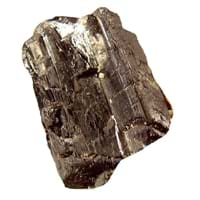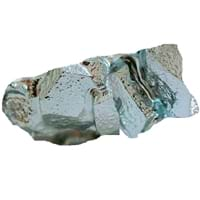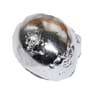Tungsten vs Gallium
Periodic Table
Symbol
W
Ga
Group Number
6
12
13
5
Period Number
6
4
Block
d block
p block
Element Family
Transition Metal
Post-Transition
CAS Number
7440337
99+
7440553
32
Space Group Name
Im_ 3m
Cmca
Space Group Number
229.00
1
64.00
9
Facts
Interesting Facts
- Tungsten element has the second highest melting point.
- Pure tungsten can easily cut down with the help of hacksaw.
- A gram of Gallium metal can be bought for only three dollars.
- Gallium metal found in ores of following things Coal, Bauxite, Diaspore, Sphalerite, Germanite and Zinc.
Sources
Earth's crust, Found in Minerals, Mining, Ores of Minerals
Earth's crust, Found in Minerals, Mining, Ores of Minerals
History
Who Discovered
Not Available
Lecoq de Boisbaudran
Discovery
In 1781
In 1875
Abundance
Abundance In Universe
5 * 10-8 %
27
1 * 10-6 %
16
Abundance In Sun
~0.0000004 %
23
~0.000004 %
16
Abundance In Meteorites
0.00 %
39
0.00 %
16
Abundance In Earth's Crust
0.00 %
39
0.00 %
24
Abundance In Oceans
0.00 %
18
0.00 %
22
Uses
Uses & Benefits
- Tungsten and its alloys are used in high-temperature applications like welding electrodes, high-temperature furnace, etc.
- Tungsten carbide is very hard and used in metal working, mining and petroleum industry.
- Gallium arsenide is a very important component of many semiconductors and led manufacturing.
- Gallium nitride is also know as a semiconductor and it is used in Blu-ray technology, mobile smartphones and LED.
Industrial Uses
Aerospace Industry, Automobile Industry, Electrical Industry, Electronic Industry
Electrical Industry, Electronic Industry
Medical Uses
NA
Surgical Instruments Manufacturing
Other Uses
Alloys
Alloys
Biological Properties
Toxicity
Non Toxic
Non Toxic
Present in Human Body
Yes
Yes
In Blood
0.00 Blood/mg dm-3
31
0.08 Blood/mg dm-3
13
In Bone
0.00 p.p.m.
35
Not Available
Physical Properties
Melting Point
3,410.00 °C
1
29.78 °C
99+
Boiling Point
5,660.00 °C
1
2,403.00 °C
99+
Appearance
Physical State
Solid
Solid
Color
Grayish White
Silvery White
Luster
Lustrous
Metallic
Hardness
Mohs Hardness
7.50
2
1.50
18
Brinell Hardness
2,000.00 MPa
4
56.80 MPa
99+
Vickers Hardness
3,430.00 MPa
1
Not Available
Speed of Sound
4,620.00 m/s
16
2,740.00 m/s
31
Optical Properties
Reflectivity
62.00 %
13
Not Available
Allotropes
No
No
α Allotropes
Not Available
Not Available
β Allotropes
Not Available
Not Available
γ Allotropes
Not Available
Not Available
Chemical Properties
Chemical Formula
W
Ga
Isotopes
Known Isotopes
33
6
24
15
Electronegativity
Pauling Electronegativity
2.36
2
1.81
15
Sanderson Electronegativity
0.98
23
2.42
2
Allred Rochow Electronegativity
1.40
19
1.82
1
Mulliken-Jaffe Electronegativity
Not Available
2.01
5
Allen Electronegativity
1.47
29
1.76
14
Electropositivity
Pauling Electropositivity
1.64
99+
2.19
39
Ionization Energies
1st Energy Level
770.00 kJ/mol
16
578.80 kJ/mol
99+
2nd Energy Level
1,700.00 kJ/mol
29
1,979.30 kJ/mol
13
3rd Energy Level
Not Available
2,963.00 kJ/mol
28
4th Energy Level
Not Available
6,180.00 kJ/mol
8
Electrochemical Equivalent
1.14 g/amp-hr
99+
0.87 g/amp-hr
99+
Electron Work Function
4.55 eV
13
4.20 eV
23
Other Chemical Properties
Ionization, Radioactive Isotopes, Solubility
Ionization, Radioactive Isotopes
Atomic Properties
Atomic Number
74
99+
31
99+
Electron Configuration
[Xe] 4f14 5d4 6s2
[Ar] 3d10 4s2 4p1
Crystal Structure
Body Centered Cubic (BCC)
Orthorhombic (ORTH)
Crystal Lattice
BCC-Crystal-Structure-.jpg#100
ORTH-Crystal-Structure-of-Gallium.jpg#100
Atom
Number of Protons
74
99+
31
99+
Number of Neutrons
110
27
39
99+
Number of Electrons
74
99+
31
99+
Radius of an Atom
Atomic Radius
139.00 pm
39
135.00 pm
99+
Covalent Radius
162.00 pm
29
122.00 pm
99+
Van der Waals Radius
200.00 pm
28
187.00 pm
32
Atomic Weight
183.84 amu
37
69.72 amu
99+
Atomic Volume
9.53 cm3/mol
99+
11.80 cm3/mol
99+
Adjacent Atomic Numbers
Valence Electron Potential
140.00 (-eV)
5
69.70 (-eV)
19
Lattice Constant
316.52 pm
99+
451.97 pm
18
Lattice Angles
π/2, π/2, π/2
π/2, π/2, π/2
Lattice C/A Ratio
Not Available
Not Available
Mechanical Properties
Density
Density At Room Temperature
19.25 g/cm3
16
5.91 g/cm3
99+
Density When Liquid (at m.p.)
17.60 g/cm3
5
6.10 g/cm3
99+
Tensile Strength
370.00 MPa
10
Not Available
Viscosity
Not Available
Not Available
Vapor Pressure
Vapor Pressure at 1000 K
Not Available
0.00 (Pa)
15
Vapor Pressure at 2000 K
0.00 (Pa)
32
Not Available
Elasticity properties
Shear Modulus
161.00 GPa
5
Not Available
Bulk Modulus
310.00 GPa
4
Not Available
Young's Modulus
411.00 GPa
4
9.80 GPa
99+
Poisson Ratio
0.28
17
0.47
1
Other Mechanical Properties
Ductile, Malleable
NA
Magnetic Properties
Magnetic Characteristics
Specific Gravity
19.22
9
5.91
99+
Magnetic Ordering
Paramagnetic
Diamagnetic
Electrical Properties
Electrical Property
Superconductor
Semiconductor
Resistivity
52.80 nΩ·m
99+
270.00 nΩ·m
15
Electrical Conductivity
0.19 106/cm Ω
10
0.07 106/cm Ω
29
Electron Affinity
78.60 kJ/mol
13
28.90 kJ/mol
31
Thermal Properties
Specific Heat
0.13 J/(kg K)
39
0.37 J/(kg K)
16
Molar Heat Capacity
24.27 J/mol·K
99+
25.86 J/mol·K
35
Thermal Conductivity
173.00 W/m·K
7
40.60 W/m·K
34
Critical Temperature
Not Available
Not Available
Thermal Expansion
4.50 µm/(m·K)
99+
18.00 µm/(m·K)
24
Enthalpy
Enthalpy of Vaporization
799.10 kJ/mol
1
256.10 kJ/mol
36
Enthalpy of Fusion
35.23 kJ/mol
1
5.59 kJ/mol
99+
Enthalpy of Atomization
837.00 kJ/mol
1
276.10 kJ/mol
39
Standard Molar Entropy
32.60 J/mol.K
99+
40.80 J/mol.K
38
|
||
|
||
|












